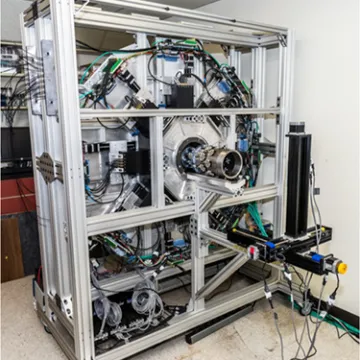Date Published: November 24, 2014
Matthew A. Kupinski's Image Science Laboratory explores concepts in objective image quality assessment and applies them to diverse areas, including diffuse-optical imaging, clinical CT imaging and national security arenas. His team has developed novel models of imaging systems that make the most efficient use of scattered light, combining task-based imaging with radiative-transport models of light propagation to allow all acquired data to be used when performing a scientifically relevant task. In addition, the Image Science Lab has applied task-based measures of image quality to homeland security imaging, wherein large-scale imaging devices search for sources of radiation in urban environments. These promising techniques have led to collaboration with Sandia National Laboratories and the U.S. Department of Energy on the development of imaging systems for confirming nuclear-treaty disarmament. In addition, Kupinski’s group has worked with a number of commercial system manufacturers to bring image-science concepts out of the university environment and into the commercial realm.

The AdaptiSPECT small-animal imaging system to be used in pre-clinical studies of cancer treatments, drug delivery, and new imaging agents. Aperture, cameras, and bed position are fully adaptive and respond to the data being obtained to ensure that task performance is maximized. (Work of Cecile Chaix)
